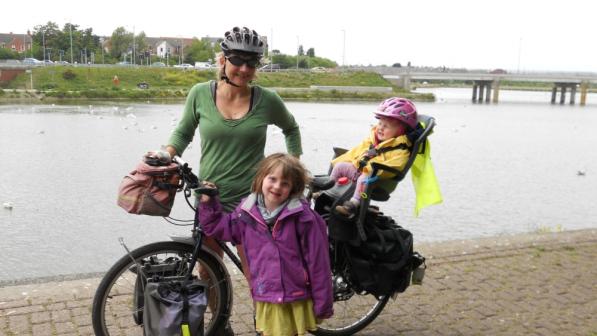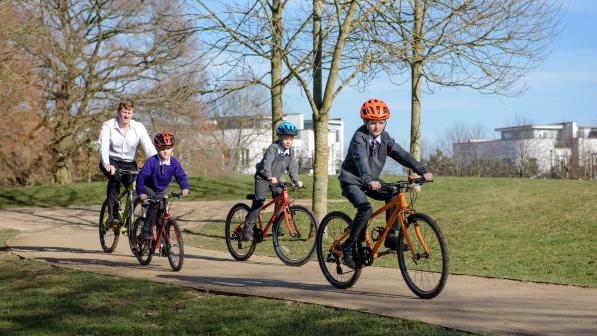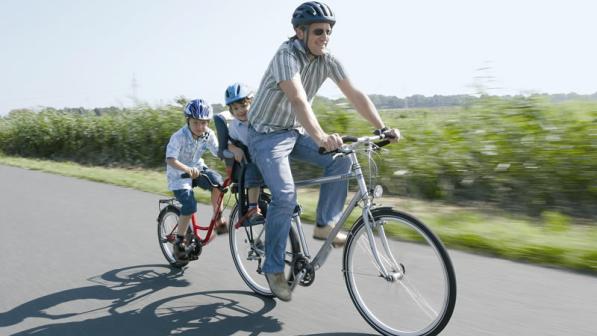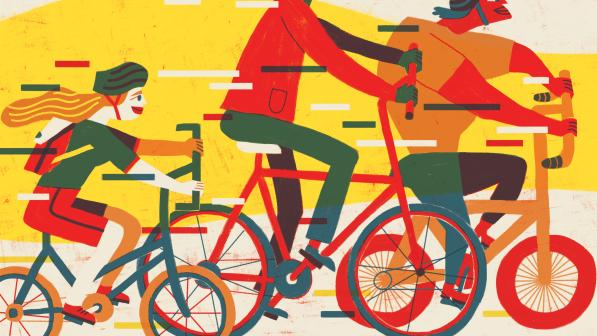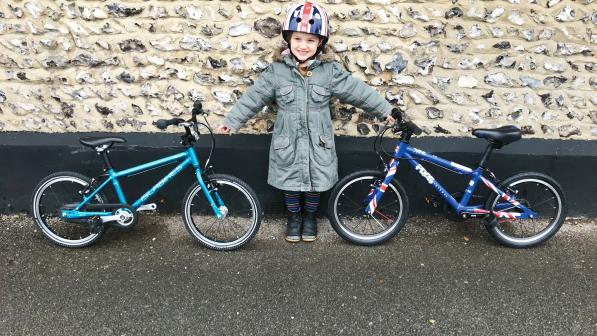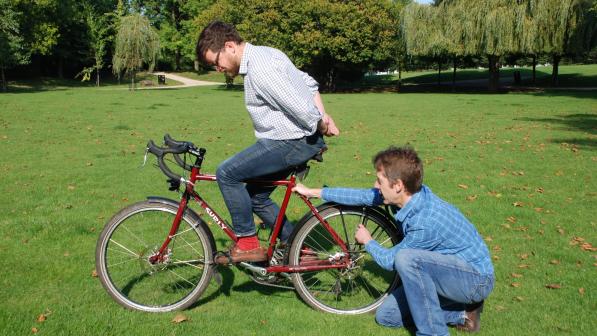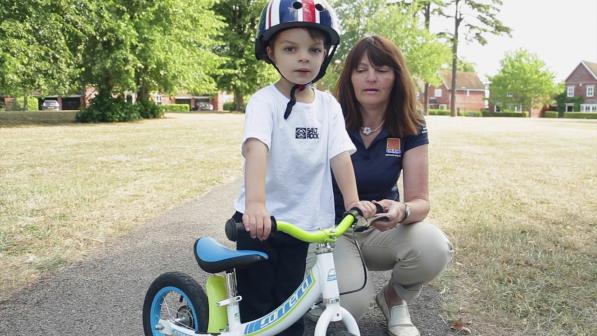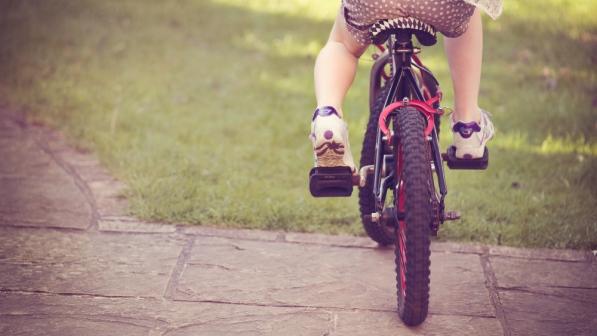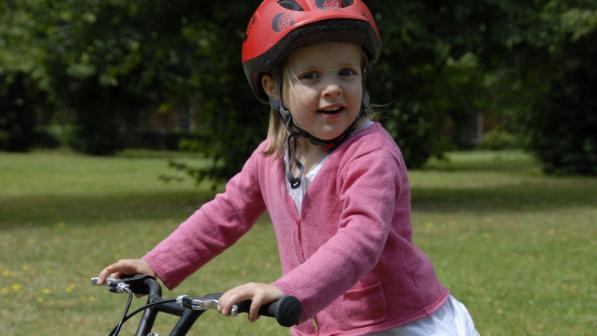How to choose the right size bike for a child

Most children’s bikes are too heavy and don’t fit properly. That’s because, even more than adult bikes, they’re designed to hit a price point. Quality kids’ bikes are readily available, however. Children’s bike specialists like Islabikes and Frog Bikes top the list.
Some mainstream brands have a range of well thought-out children's bikes too: Hoy, Wiggins, Dawes, Pinnacle, and Ridgeback, for example. A good bike costs more initially but will have a longer life. It can be passed on to a sibling or sold for a decent sum second hand. Both Islabikes and Frog sell second-hand bikes.
Measure inside leg length
Children’s bikes are usually sized by age range, a blunt indicator at best. Height and inside leg length are much more reliable guides.
Don’t go on trouser size for inside leg length: measure it. As you want the distance from sit bones to foot soles, simply subtract sitting height from standing height (wearing just socks, not shoes). Get your child to stand and then sit (legs straight out in front) with their back to a wall and measure to the floor from a book or ruler resting on their head.
Alternatively, you can get them to stand in socks against a wall and place a small hardback book between their legs and slide it up the wall, stop at the point as if they are sat on a saddle. Hold the book still and mark where the top of the book the touches the wall.
Enlightened manufacturers quote minimum and sometimes maximum inside leg lengths for their bikes.
Unlike sizing adult bikes, you won’t be assessing size by seat-tube length. Children’s bike sizing is influenced most by a different factor: wheel size. Crank length is also critical.
Wheel size
Other things being equal, bigger wheels mean a bigger bike. The bottom bracket, and thus the saddle, will be higher off the ground, making it more of a stretch to get one or both feet down. The bike will be longer in order to fit in the wheels – longer in the wheelbase and longer in the effective top tube, due to longer front centres, making the reach to the handlebar further.
Common wheel sizes are 14in, 16in, 20in, 24in, 26in and 700C (approx 27in). Which is the best size for your child? The biggest that they can comfortably fit on.
As a rule of thumb, that will be a wheel diameter no greater than their inside leg length. Since this is only a rule of thumb, nominal wheel diameter in inches is fine.
If your 4-year-old has a 41cm (16in) inside leg, that’s 16in wheels maximum; if your 8-year-old has a 60cm (24in) inside leg, that’s 24in wheels. They will be able to ride bikes with wheels the next size down and on some brands will fit a bike with wheels the next size up. Check in store to ensure a comfortable fit.
Cranks
A child’s bike requires shorter cranks, and the bike needs to be designed around those short cranks. How short should they be? Ideally, no longer than about 10% of the child’s height, so 100mm for a child a metre tall.
Overlong cranks have three side effects: they make pedalling awkward and inefficient; they force bike designers to raise the bottom bracket to prevent pedal strikes, which makes it harder for children to get one or both feet on the ground; and they force the front centres distance to be longer to prevent the feet hitting the front wheel when turning, which has the knock-on effect of increasing reach.
A child’s bike ought to have cranks with a narrower pedal tread (‘Q-factor’) than an adult’s bike, too. Pedal tread is the distance the feet are apart. Splaying the feet wide makes pedalling more awkward, due to the angle the legs are at, and it’s worse the shorter your legs are; picture tall and short triangles with the same width base.
Pedal tread can be reduced with a narrower bottom bracket, which the bike must be designed for, and with a lower-profile crankset. Other things being equal, single-chainring cranks are narrower than multiple-ring cranks, making them a good pick for any bike for a primary school-age child. As well as being narrower, this simplifies the gearing and makes the bike lighter.
The best fit
If you’re buying online, pay close attention to minimum/maximum inside leg measurements and liaise with the retailer if you’re wavering between two overlapping sizes. If possible, however, take your child to the bike shop. It’s better to ruin the surprise than ruin the ride due to a bike that doesn’t fit. As with adult bikes, some measurements are key.
• Standover
Ask your child to stand over the bike’s top tube to ensure there’s clearance. A gap is essential. For a bike that will be ridden off road, it needs to be a decent gap.
• Saddle height
You can use the heel-on-pedal method to check that a bike is big enough: if the seatpost is at maximum extension and their extended leg is bent, it’s too small. But unless they’re a confident cyclist, make sure the saddle can go lower than this.
Many children like to be able to get both feet on the ground when sitting on the saddle – flat on the floor if they’re learners and at least toes down if they’re still gaining confidence. Don’t stress about the saddle being a bit low. You can raise it when they’re happy for you to do so.
• Handlebar height and reach
Children are comfortable sitting more upright than adults, so their bikes require a relatively shorter reach and a higher handlebar. Sitting bolt upright is good for younger children on starter bikes. As they grow, they’ll become more able to ride in a leaned-forward position.
But don’t push this – continue to err on the side of a shorter reach. On some bikes, this may mean fitting a shorter stem. Rather than working to a formula, sit them on the bike while you hold it upright. If they look over-stretched, they are.
• Controls
Check that your child can easily apply each brake fully and can change gear up and down. If the controls are too stiff for their small hands or aren’t in easy reach, ask the shop to adjust them. If that’s still not enough, try a different bike or be prepared to buy and fit better controls. This is critical.
A word on weight
Before you buy any child’s bike, pick it up to test the weight. Some weigh more than an adult’s bike! That’s a huge burden for someone less than half your size and strength.
While cyclists often exaggerate the difference a lighter bike can make, for children the bike is a much bigger proportion of their own weight, so the benefit of any weight reduction is magnified by that difference. For children’s bikes, less is more.
